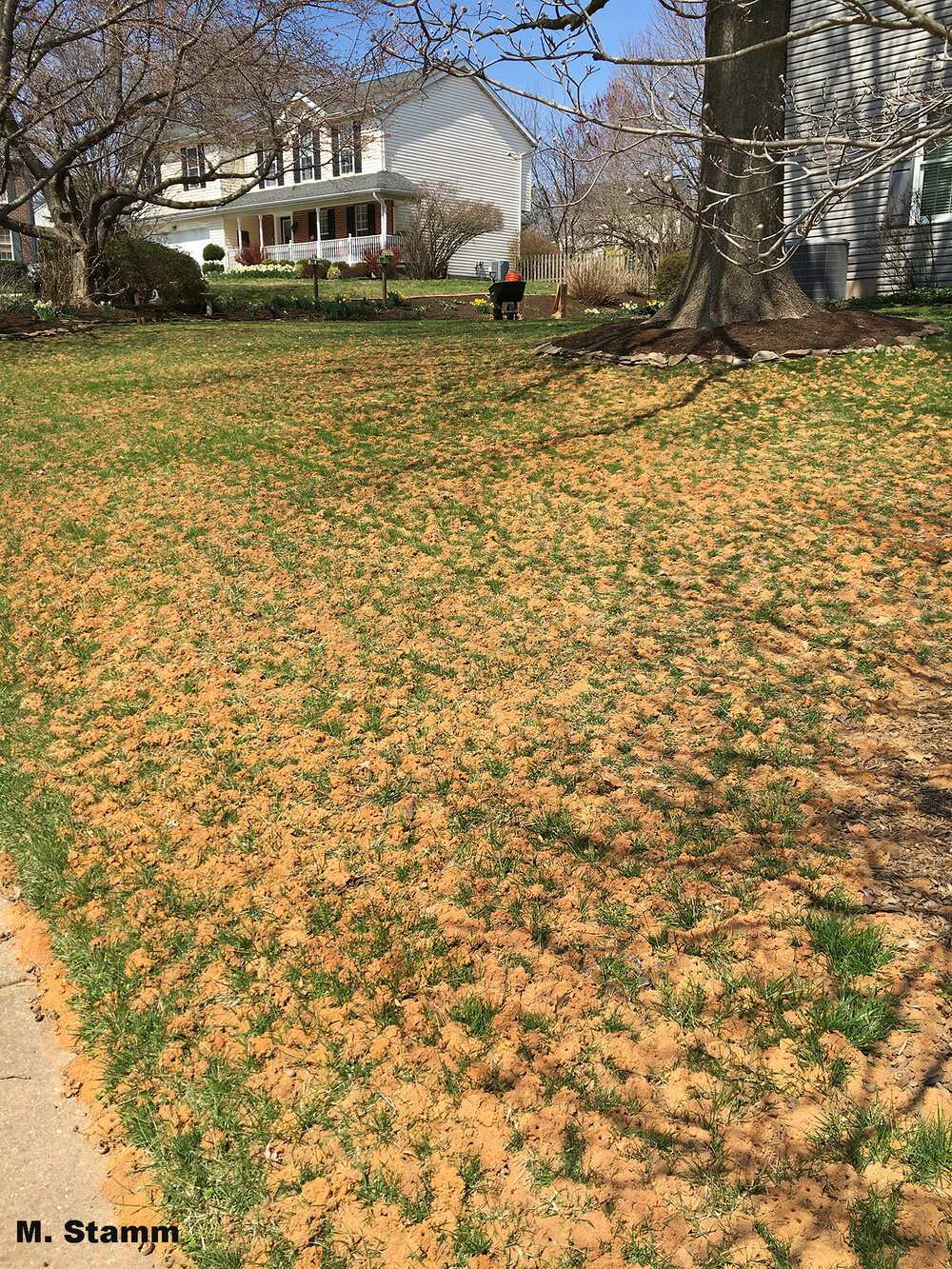Spring sunshine heralds the appearance of plasterer bees, Colletes

What is the guy with the camera looking at?
Our recent visits to the rainforests of Costa Rica have been delightful, but spring has finally sprung and I am getting a flood of interesting messages from Bug of the Week viewers discovering cool and creepy insects in and around their homes. This week we bring it back to the DMV to learn about some homegrown critters.
Last summer while teaching in Philadelphia, an avid gardener shared an interesting story about ground nesting bees laying claim to large portions of her yard. She followed up with me in February with a truly amazing picture of her landscape, where literally hundreds if not thousands of ground nesting bees now reside in her yard. Fortunately, before the shelter-at-home orders kicked into high gear, I was able to visit a park and vacant golf course to piece together more details about these fascinating ground-dwelling bees known as plasterer bees. Along with beetles, flies, and butterflies, bees are among the premier pollinators on the planet. Plasterer bees are some of the very first native pollinators to appear each spring. The name plasterer stems from their intriguing behavior of building galleries in the ground and then coating the interior surface of their burrow with a thin, glossy, translucent material produced by a gland in their abdomen. Plasterer bees use their tiny mouthparts to remove the soil while constructing their galleries. The excavation is accompanied by a buzzing sound that may help loosen particles of soil and aid in the digging process. The bee’s mouthparts are also used like a mason’s trowel to spread the glandular secretion on the inside of the burrow before it dries into a cellophane-like coating. How clever! This habit of sealing their galleries gives this bee the common name “plasterer bee”.
What’s up with all these holes in the ground? Watch and learn a little bit about the fascinating lives of delightful plasterer bees.

Soil conditions must be perfect to support nesting sites for thousands of plasterer bees. Thanks to Marlene Stamm for sharing her images and providing a home for these fantastic native pollinators.
Plasterer bees are relatives of honeybees and bumblebees but, unlike their cousins, these bees are solitary. Rather than living in a communal nest, each female plasterer bee constructs a subterranean gallery of her own to serve as a home for her brood. Burrows are provisioned with a semi-liquid concoction of nectar and pollen from flowering plants that bloom early in the spring. This yummy delight is food for bee larvae that develop during the summer and fall within the galleries. Although they are not considered social insects, large numbers of plasterer bee galleries are often abundant in close proximity in sandy soils with thin vegetation. Plasterer bees emit a delightful citrus-like odor when handled. This odor is a pheromone produced by a gland in the head of the bee. The pheromone contains linalool and other aromatic compounds that may help plasterer bees find nesting sites, food sources, or potential mates.
While exploring nesting sites along a trail in Rock Creek Park and at the vacant golf course nearby, I was delighted to see dozens of small plasterer bees zooming inches above the ground. While swarming bees at the margin of fairways might dismay some golfers, fear and worry are unwarranted. Unlike yellow jackets, bald-faced hornets, and other stinging terrors, plasterer bees are docile and extremely reluctant to sting. Remember, each female bee is a mother and to risk her life by stinging a human could mean instant curtailment of her reproductive potential should she die in the encounter. Over large areas of a balding zone in the rough, several burrows could be found in each square meter of ground. The plasterer bees were not responsible for the balding turf. They simply colonize areas where the turf is naturally thin. Improving the density of grass will probably reduce the abundance of bees if this is your goal.
If you see swarms of small hairy or metallic colored bees constructing burrows or emerging from galleries in your garden or lawn, please resist the urge to treat them with insecticides. Several species of native pollinators, including anthophorid bees, yellow-faced bees, andrenid bees, halictid bees, and plasterer bees nest in the ground. Enjoy these beauties and give them a break. They pollinate plants and keep our planet humming.
Acknowledgements
Bug of the Week thanks native bee guru Sam Droege for helping to identify bees seen in this episode. We also thank Marlene for sharing an image of her bee-friendly yard and providing the inspiration for this story. The wonderful article “Ecology, Behavior, Pheromones, Parasites and Management of the Sympatric Vernal Bees Colletes inaequalis, C. thoracicus and C. validus by S. W. T. Batra was used as a reference.
This post appeared first on Bug of the Week